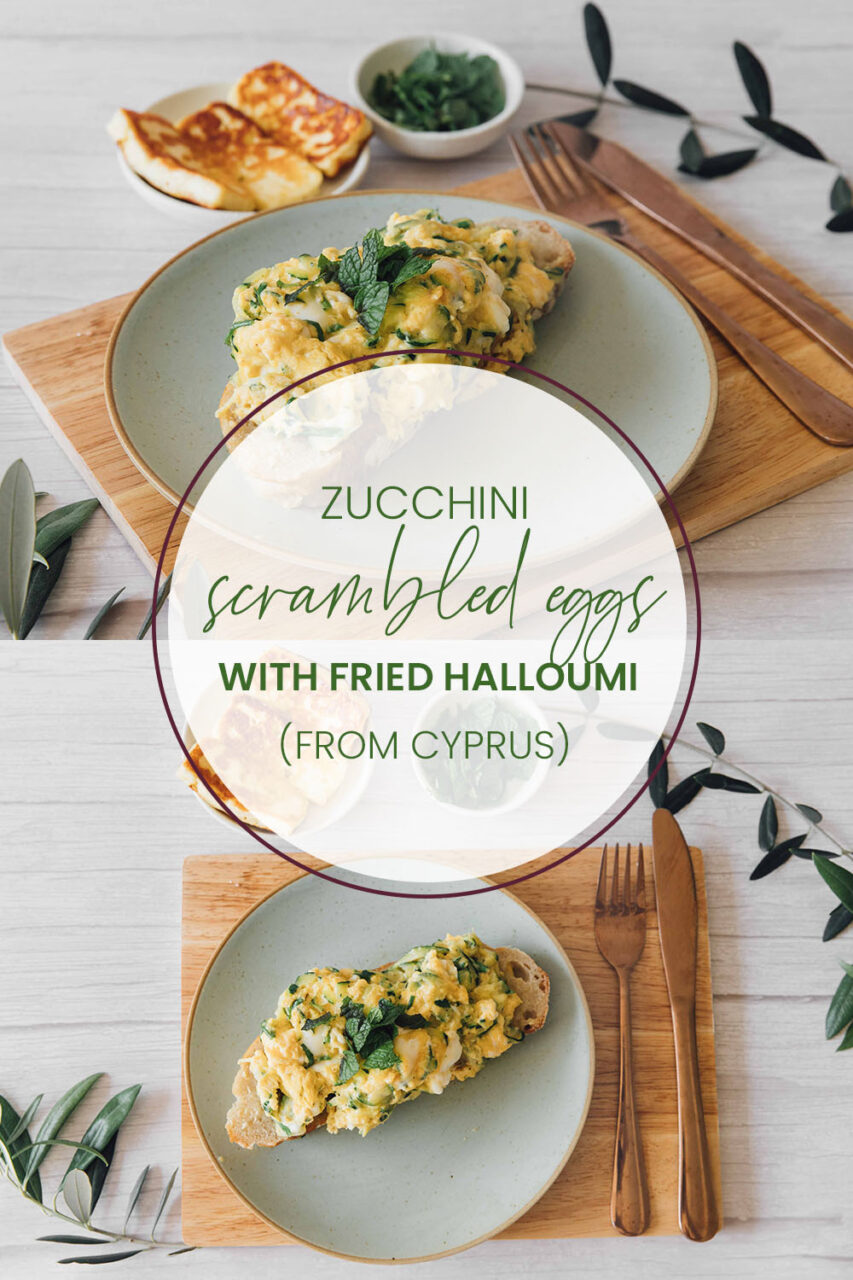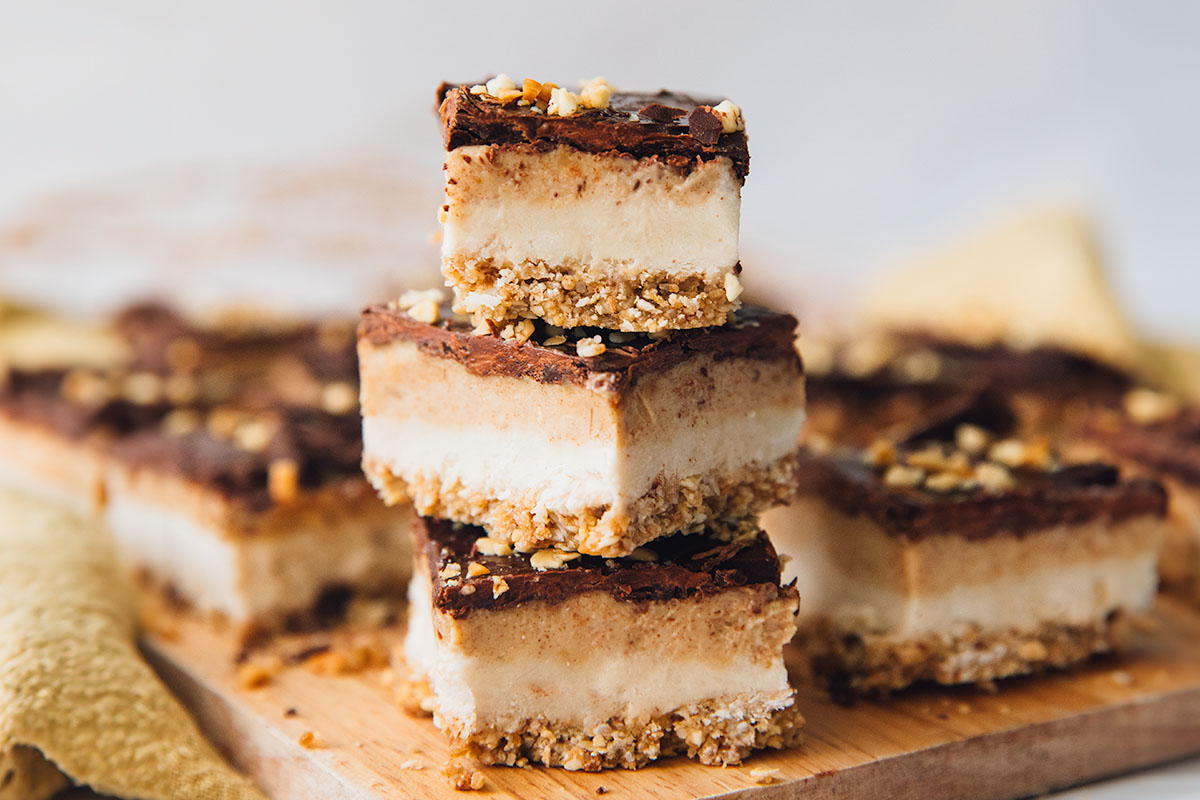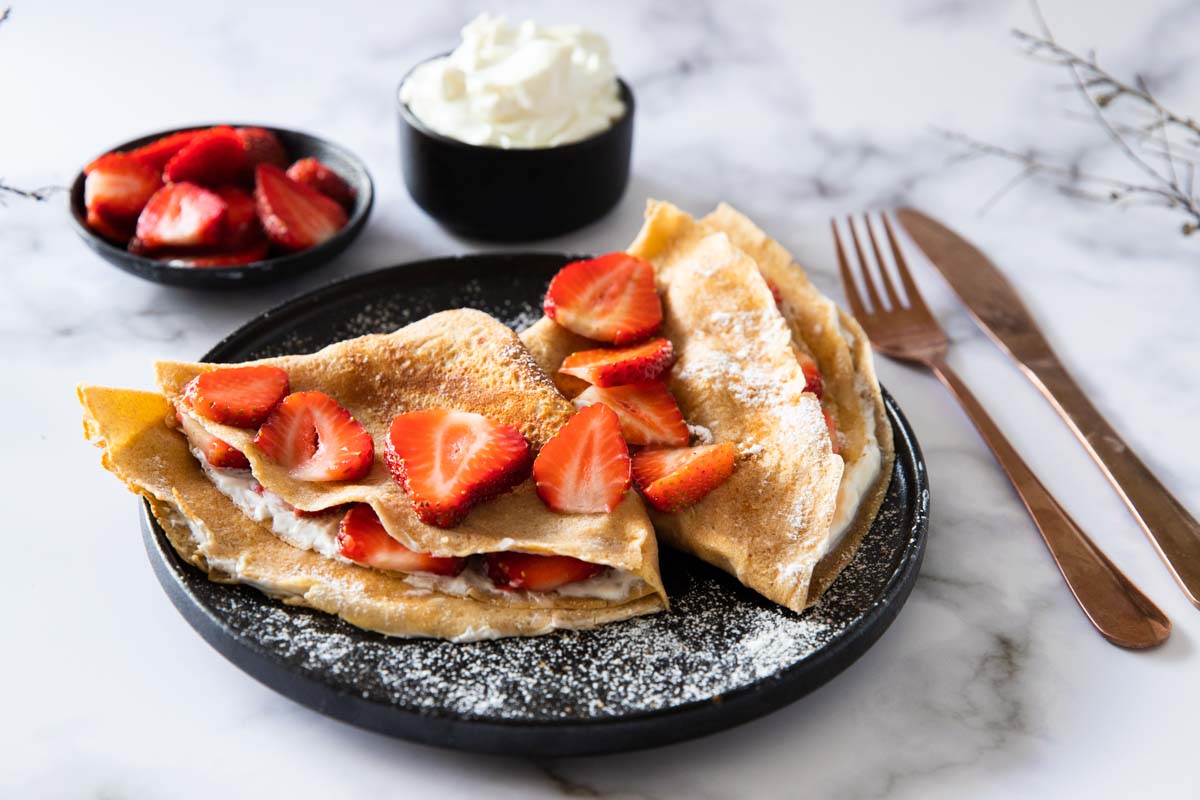This simple, summery dish, consisting of halloumi scrambled eggs and zucchini fried in olive oil (κολοκυθάκια με αυγά in Greek) is a Cypriot staple. In our recipe, we served the zucchini scramble on top of sourdough with a side of Cypriot fried halloumi, making it an ideal breakfast meal.

Overview of Cyprus
With its bounteous wealth of turquoise waters, sunshine, superb wine and halloumi, Cyprus literally sounds like heaven on earth. On reading up about it, one understands why Aphrodite, the Greek goddess of love, claimed it as her birthplace, emerging from the seafoam onto the shores which reflected her ethereal beauty. It has long been on my list of countries to visit. Since doing some further research for this challenge, it has creeped even higher up this list.
Located in the eastern Mediterranean Sea, it is the third largest and most populous island in the Mediterranean. Human inhabitation of Cyprus is said to date all the way back to the Palaeolithic era, with archaeological remains from this period found in the Neolithic village of Khirokitia. The island has had a very long and turbulent history. Due to its strategic position at the crossroads between Europe and Asia, it been occupied by almost every major power imaginable. The island is made up of two major ethnic communities, the Greek and the Turkish Cypriots. The long-standing conflict between these two communities has led to a great division in the island.
Politics aside, the island of Cyprus has many things going for it. Firstly, its natural beauty: it is home to tall mountains, lush valleys, wide beaches and a lovely Mediterranean climate. Secondly, its rich ancient history: as aforementioned, alongside all of its preserved ancient ruins, Cyprus is also said to be the birthplace of Aphrodite, and we humans do love love. Petra tou Romiou, a sea stack known as Aphrodite’s Rock, has become quite the destination to visit in Cyprus. Thirdly, its cuisine.
History of Cypriot Cuisine
Thanks to its geographical location and history of occupation, Cypriot cuisine is truly an amalgamation of culinary influences. The food has been influenced by Greek, Turkish, French, Italian and Middle Eastern cuisines, making it rather unique. Cyprian people love their food, and sharing a meal is a massive part of the country’s social culture. Meze style dishes are particularly popular. Meals often consist of many different items for everyone at the table to share. We’ve always thought this to be the best way to enjoy a meal. We are right on board with the way the Cyprian’s do things!
Meat is very popular and is a key ingredient in many Cypriot dishes. However, extremely fresh, locally-sourced produce is also at the heart of Cypriot cuisine (meaning us vegetarians don’t miss out!). The Mediterranean climate of the island is ideal for growing a wide variety of fruit and vegetables, which are heavily utilised in Cypriot dishes. Let’s not forget one of Cyprus’s best exports: halloumi. This delicious fried cheese is a reason alone to fall in love with Cypriot food.
Popular Cypriot Dishes
- Halloumi– A cheese made with a mixture of goat’s and sheep milk. It is known by its mild salty flavour and rubbery texture. It’s most commonly sliced, fried and served hot from the pan, or served cold alongside watermelon.
- Kolokythákia me avgá– This dish consists of fried zucchini and scrambled eggs. It often features as part of a meze spread.
- Louvi– A Cypriot staple consisting of black eyed beans with swiss chard or zucchini. This is normally seasoned with olive oil, salt and pepper.
- Trachanas– A vegetarian soup made of dried cracked wheat and yogurt or fermented milk. Different countries have different variations of the soup, with Cyprus’s version often containing pieces of halloumi.
- Loukoumades- These sweet treats are essentially deep fried dough balls soaked in honey. They are often coated in crushed nuts, sesame seeds and cinnamon.
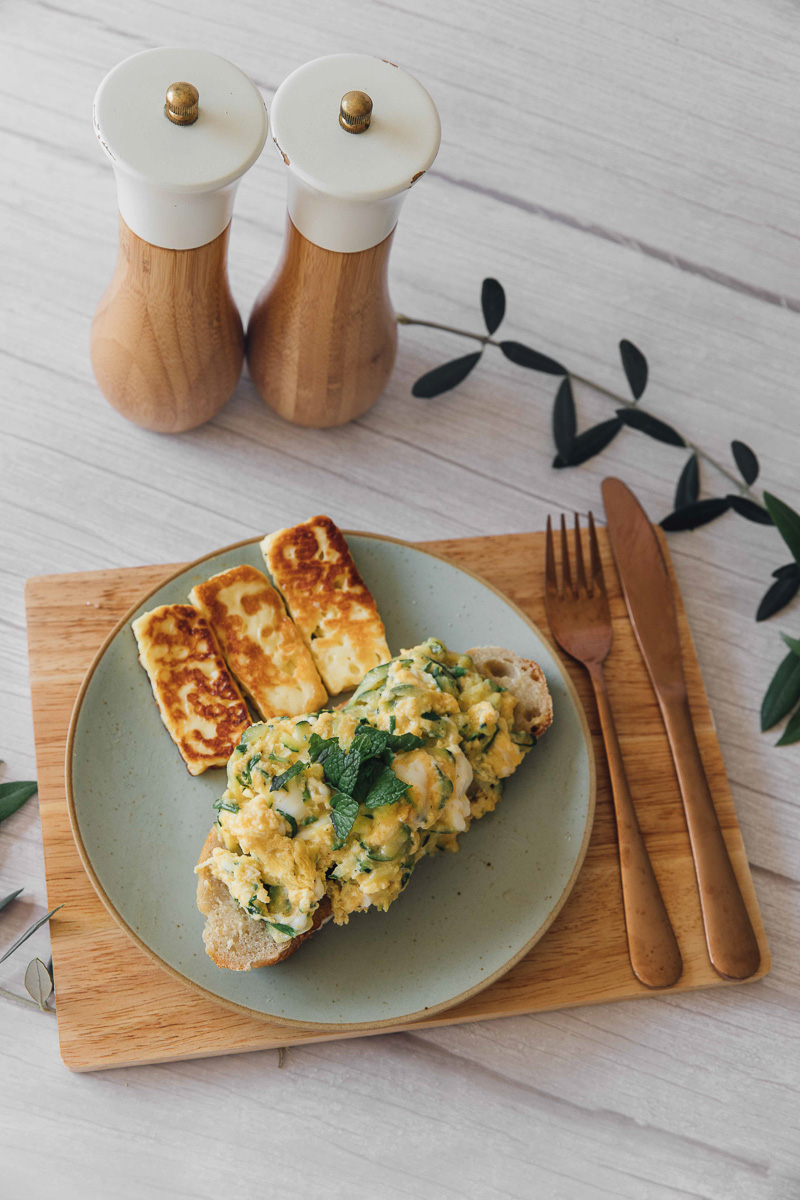
Making Zucchini Scrambled Eggs with Fried Halloumi
Being the massive halloumi fans that we are, we knew that whatever Cypriot recipe we decided to make, halloumi was going to star. We were almost tempted to simply fry ourselves up some fat slices of fried halloumi and call it a day. However, we realised that wouldn’t be the most exciting recipe to grace our blog. Instead, we decided to feature our beloved cheese alongside another Cypriot dish that sounded rather up our alley: scrambled eggs with zucchini. After months of zucchini costing up to $30 a kg, they have finally come in season. We knew now was the time!
For our rendition of kolokythákia me avgá, we decided to grate up the zucchini, fry it, then mix it in with the scrambled egg. However, traditionally, the zucchini is cut into rounds and fried separately, then served up with scramble egg. Also, we served ours on top of a piece of sourdough alongside fried halloumi, whereas typically the dish would be served by itself as a meze dish. Either way, the result is going to be tasty, so you can choose which method you want to go for.
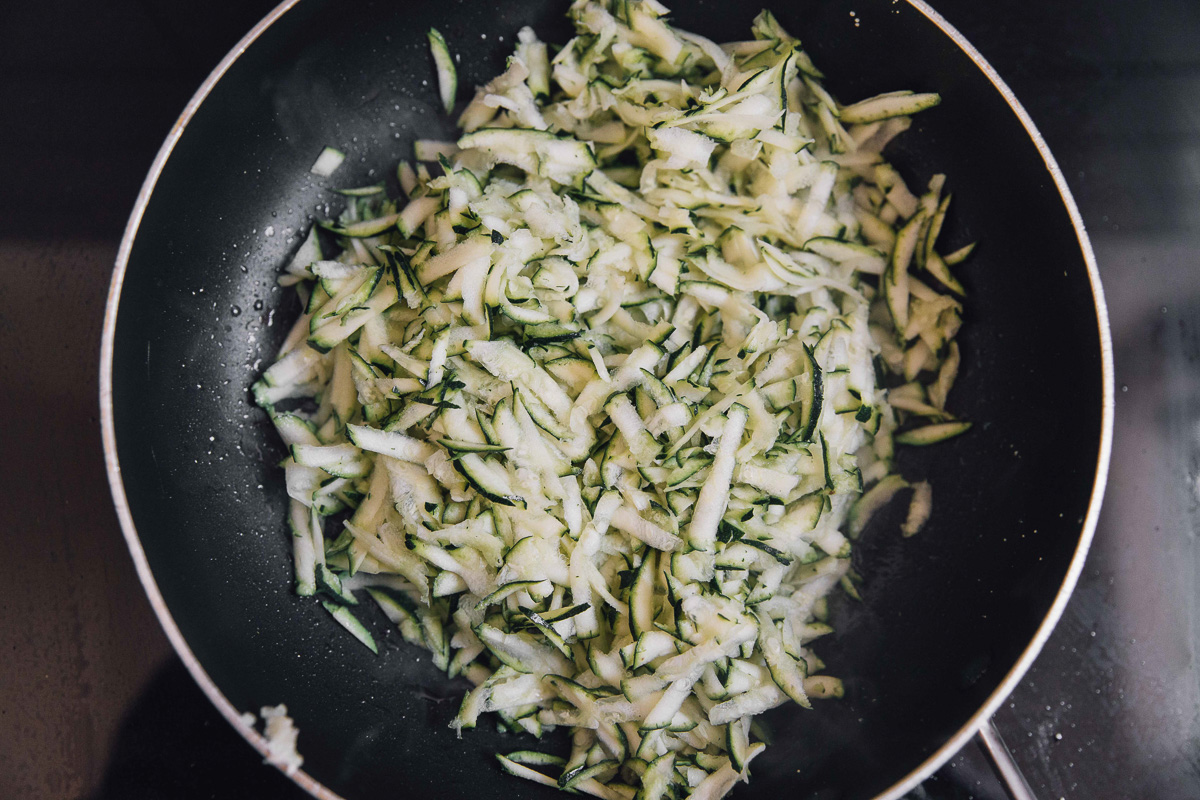
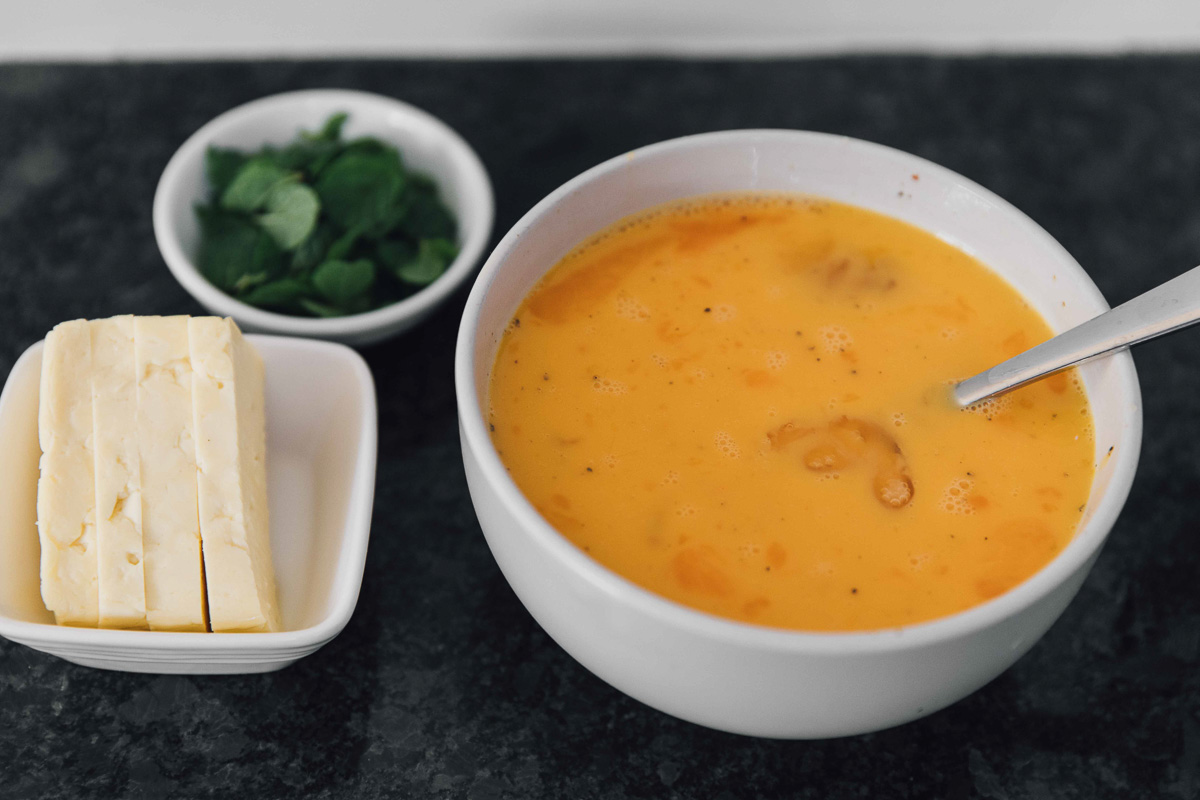
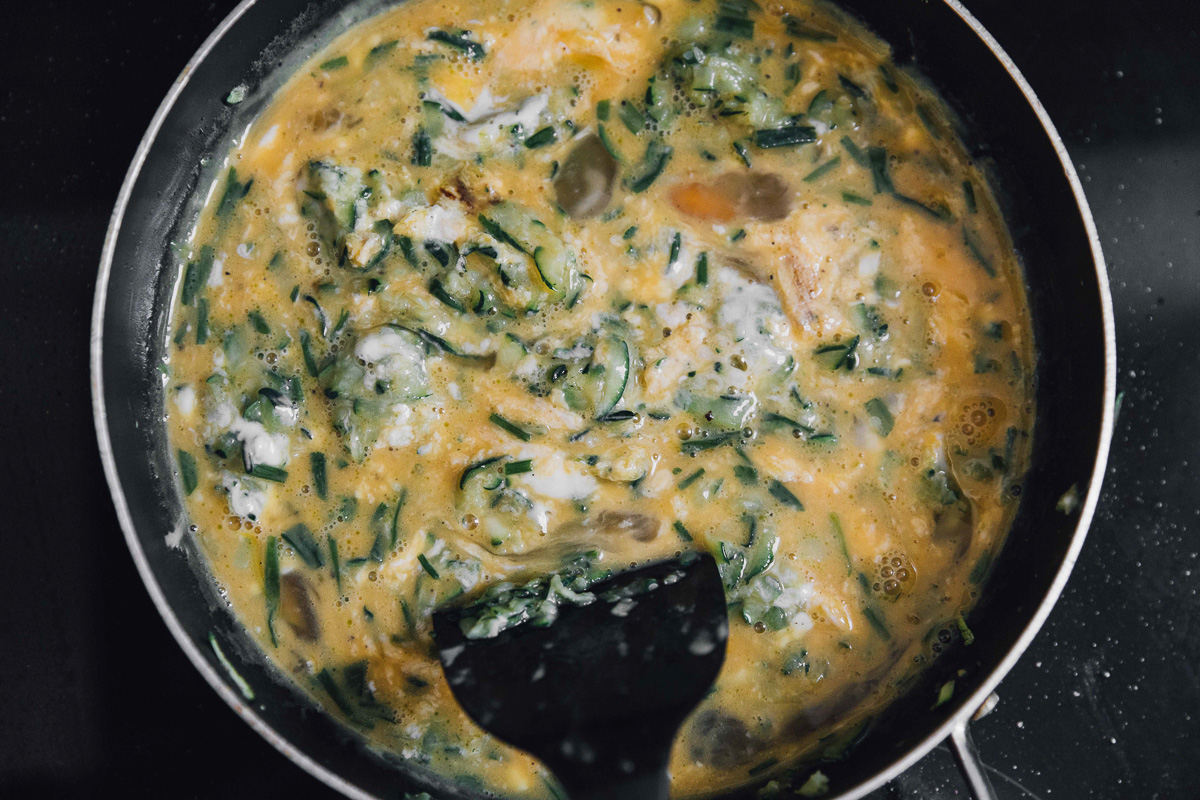
How to make Zucchini Scrambled Eggs with Fried Halloumi
This zucchini scramble is super quick and easy to make, coming together in the following simple steps:
- In a bowl, whisk together eggs and season with salt and pepper.
- Heat olive oil over medium-high heat in a large frying pan. Add zucchini and cook for three minutes, stirring often. Add garlic and cook for another minute. Season with salt and pepper.
- Turn heat down to medium and pour egg mixture to the pan with the zucchini. Cook for a few minutes, gently stirring to scramble eggs. Take off heat just before eggs are fully cooked (they will continue to cook in the pan).
- Meanwhile, heat oil in another pan and fry halloumi pieces on each side for a minute or two, until browned.
- Serve zucchini scramble as is or on top of bread, topped with fresh mint, a squeeze of lemon juice and halloumi.
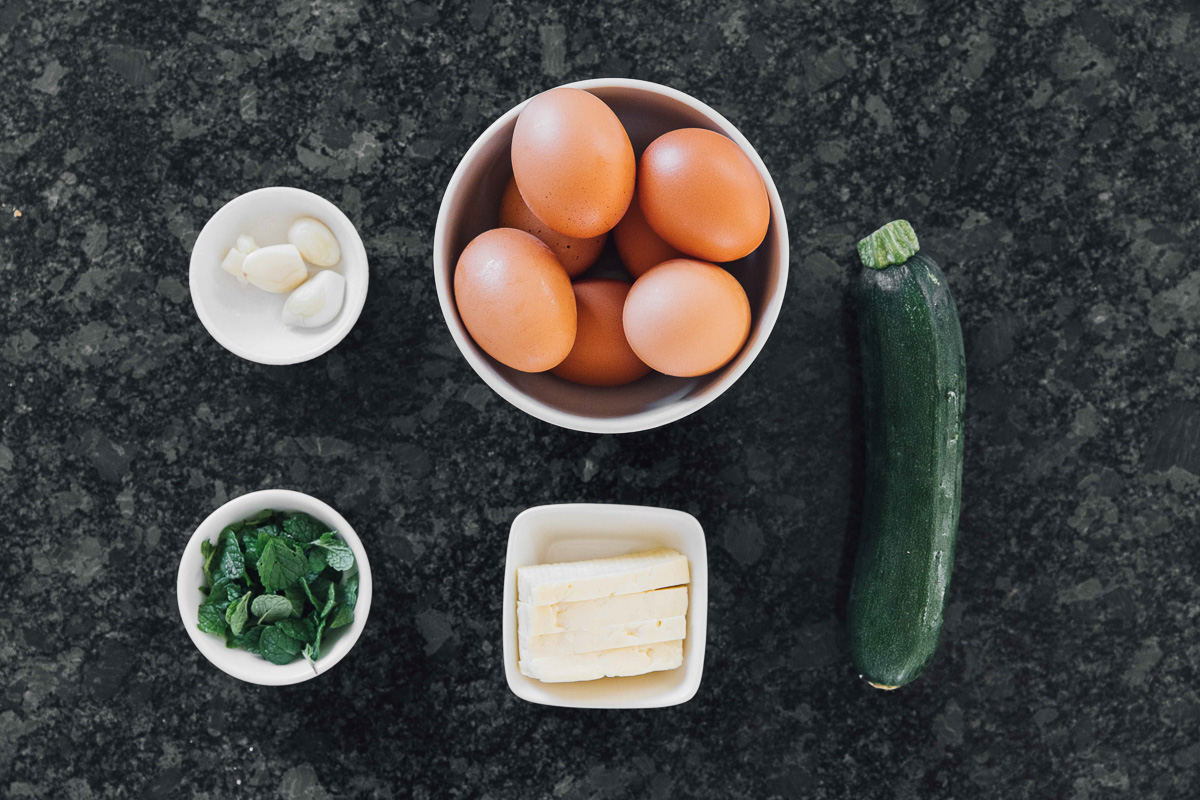
Ingredient notes for Zucchini Scrambled Eggs with Fried Halloumi
- Zucchini- For this recipe, we grated the zucchini and then combined it with the egg mixture. However, you can also slice the zucchini into rounds, fry it up then combine it with the scramble afterwards.
- Halloumi- Make sure to get a high-quality Cypriot halloumi for this recipe (I mean, it would be rude not to). Poor-quality halloumi can be quite hard and rubbery, whereas the good stuff literally melts in your mouth.
- Eggs– Although this zucchini scramble works best with eggs, if you want to make this dish vegan, you could substitute for silken tofu.

Serving suggestions for Zucchini Scrambled Eggs
As mentioned above, we served our zucchini scramble on fresh sourdough with a side of halloumi as a delicious brunch dish. If you’re dairy-free, a side of mushrooms to replace the halloumi would work nicely. However, you could also serve the scramble as part of a meze spread if you want to keep things a little more simple/ traditional.
Other European dishes to make:
- Vegan Currywurst with Seitan Bratwurst
- Torrejas Recipe (Cardamom French Toast)
- Draniki Recipe from Belarus
Liked this halloumi scrambled eggs with zucchini? Pin it for later!
